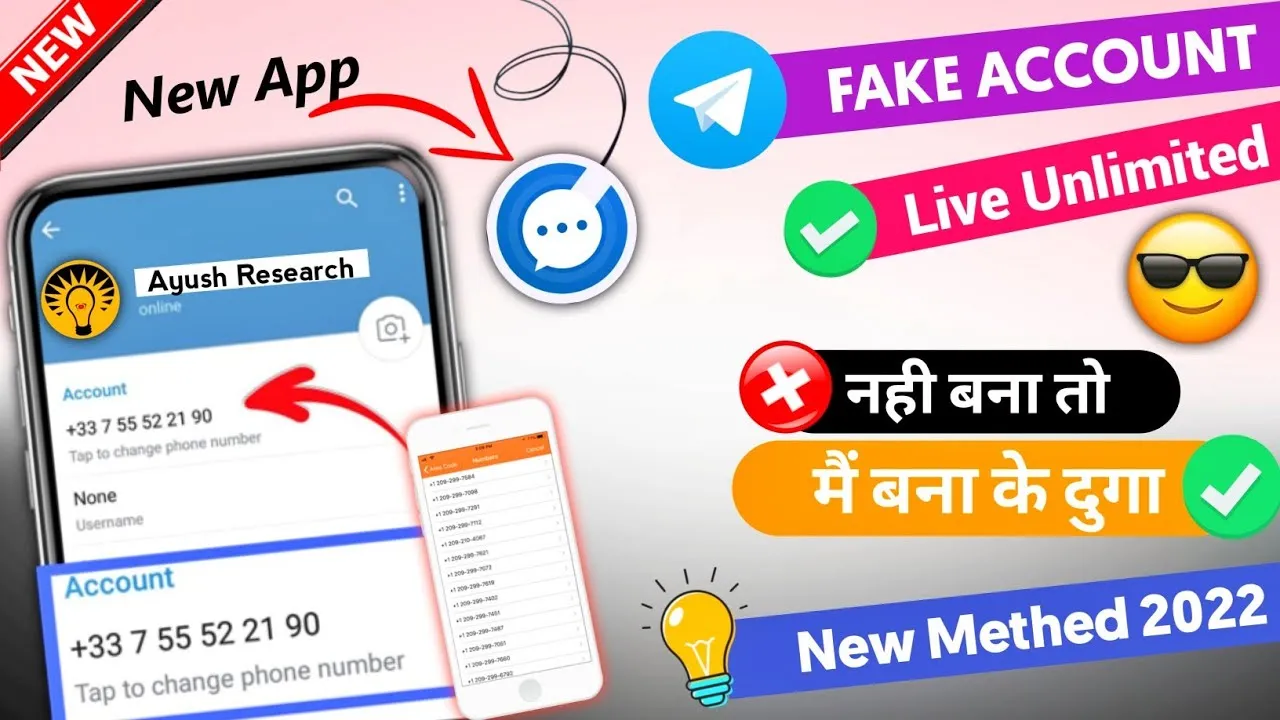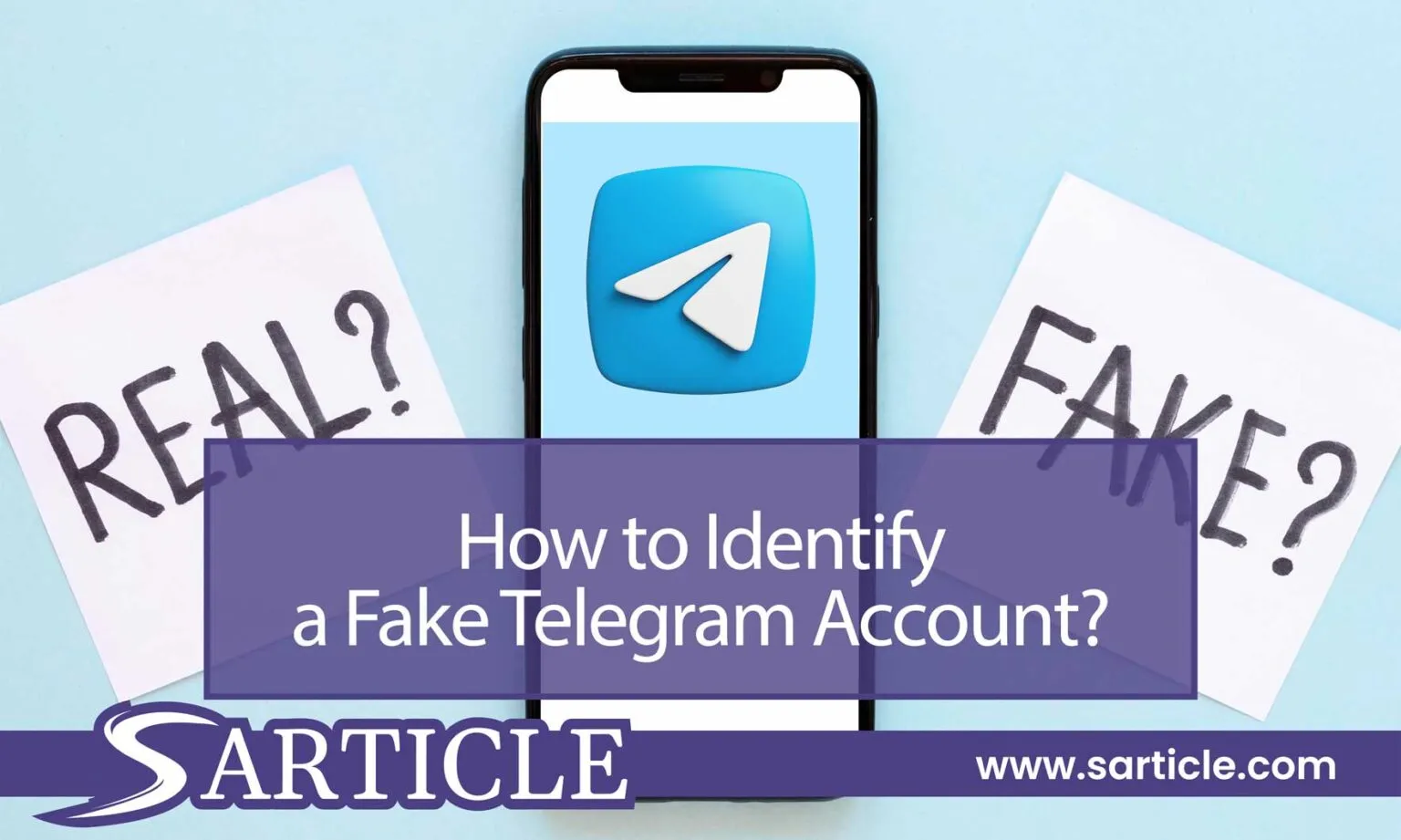In today’s digital age, communication apps like Telegram have become a breeding ground for both genuine connections and deceptive profiles. Recognizing a fake Telegram account is crucial to safeguarding your privacy and security. Whether you're chatting with friends or joining groups, knowing how to identify a phony account can save you from potential scams and unwanted interactions. Let’s dive into the common signs that can help you spot these deceptive profiles!
Common Signs of a Fake Telegram Account

Identifying a fake Telegram account can sometimes feel like searching for a needle in a haystack, but there are several telltale signs that can help you differentiate between real and fake users. Here are some common indicators:
- Profile Picture: Fake accounts often use stock photos or generic images. If the profile picture looks overly professional or is a celebrity, it’s worth investigating further.
- Username: Many fake accounts opt for random or nonsensical usernames. If the username seems strange or has a lot of numbers, it might be a red flag.
- Limited Activity: Check the account’s activity. If they have no messages, groups, or contacts, it's a sign they might be using the account for malicious purposes.
- Communication Style: Pay attention to how they interact. Fake accounts often have awkward or robotic communication styles, lacking the nuance of genuine conversation.
- Requests for Personal Information: If the account asks for sensitive information like your address or financial details, it’s likely a scam.
Being aware of these signs can help you stay one step ahead and ensure your Telegram experience remains safe and enjoyable. Always trust your instincts!
Also Read This: How to Remove the Shutterstock Logo from Your Images
3. Checking Profile Information

When trying to determine if a Telegram account is real or fake, one of the first things you should do is check the profile information. This is like looking at the front door before entering a house; it gives you a glimpse into what’s inside.
Here are some key aspects to consider:
- Profile Picture: A legitimate account usually has a clear, recognizable profile picture. If the image is generic, overly edited, or suspiciously professional, it might be a red flag.
- Username: Check the username closely. Fake accounts often have random strings of letters or numbers, or they might imitate well-known figures but with slight variations, like adding a period or extra letters.
- Bio Information: Look at the bio section. Real users often share personal details like interests, hobbies, or contact information. A lack of any personal touch or a bio filled with generic phrases can indicate a fake account.
- Account Age: You can find out how old the account is. If it’s a brand-new account with little to no activity, proceed with caution.
It’s important to remember that these details can be easily faked, but when combined with other observations, they can provide valuable clues about the account's authenticity.
Also Read This: Mastering the American Accent with Dailymotion Tutorials
4. Analyzing User Behavior
Another effective way to spot a fake Telegram account is by analyzing user behavior. Just like in real life, people’s actions can reveal their true intentions. Here’s what to look for:
- Message Patterns: Pay attention to how the user communicates. Do they send unsolicited messages or spam links? Genuine users typically engage in meaningful conversations.
- Interaction with Others: Observe how they interact with other users in group chats. Do they contribute to discussions, or are they mostly silent? Fake accounts often lurk without engaging.
- Response Time: Notice how quickly they respond to messages. A fake account might have delayed responses or inconsistent timing that doesn’t align with a typical user’s schedule.
- Content Sharing: Look at what they share. If they regularly post promotional content or links to suspicious sites, it might indicate a fake account.
By keeping a close eye on these behaviors, you can gain further insight into the authenticity of a Telegram account. Think of it as piecing together a puzzle; each behavior adds more clarity to the overall picture!
Also Read This: How to View a Private YouTube Video with Ease
5. Verifying Contact Information
When it comes to identifying a fake Telegram account, verifying contact information is crucial. It’s often the first line of defense against online impersonation. Here’s how you can do it:
- Cross-check Phone Numbers: A legitimate account usually has a registered phone number. If someone claims to be someone you know, verify their number through other channels. If their number doesn’t match the one you have, it could be a red flag.
- Look for Social Media Links: Genuine users often link their Telegram accounts to other social media profiles. Check these for consistency. If the social media presence seems sparse or suspicious, tread carefully.
- Profile Clarity: A fake account may have vague or generic contact info. Look for complete details that include not just a phone number but also email addresses and website links that can be researched.
Remember, a trustworthy account will have a clear and consistent contact trail, whereas a fake one might leave you in doubt.
Also Read This: Is Downloading from Dailymotion Legal? What You Need to Know
6. Using Telegram's Security Features
Telegram offers various security features designed to help you safeguard your account and identify potential fakes. Utilizing these tools can make a significant difference in your online safety:
- Two-Step Verification: Enable this feature to add an additional layer of security. It requires not just your password but also a code sent to your phone. This makes it harder for anyone else to access your account.
- Privacy Settings: Go into your privacy settings and customize who can see your phone number, profile photo, and last seen status. Limiting visibility helps you control who can contact you.
- Report Suspicious Accounts: If you encounter an account that feels off, don’t hesitate to report it. Telegram provides options to block and report users, which helps keep the platform safer for everyone.
By leveraging these security features, you can protect yourself not just from fake accounts but from other potential online threats as well.
Also Read This: What Are the Top Tools for Accessing Alamy Images Without Watermark Restrictions?
7. Reporting Suspicious Accounts
Recognizing a fake Telegram account is just the first step; reporting it is crucial to maintain a safe environment for all users. If you come across an account that raises red flags, it's essential to take action. Here’s how to report suspicious accounts effectively:
- Open the Chat: Go to the chat window of the suspicious account.
- Access Profile: Tap on the profile name at the top to view their details.
- Select Menu: On the profile screen, tap the three dots (or the menu icon) located in the upper right corner.
- Report: Choose the "Report" option. Telegram will present you with several reasons for reporting.
- Choose Reason: Select the reason that best fits the situation, such as “Spam,” “Impersonation,” or “Fraud.”
- Add Comments: If desired, you can add additional comments to clarify your reasons for reporting.
- Submit: Finally, click “Send” or “Report” to submit your report to Telegram.
By reporting these accounts, you help Telegram's moderation team review and potentially take action against malicious users. Remember, your vigilance not only protects you but also helps safeguard the entire community.
8. Conclusion
In our fast-paced digital world, being able to recognize a fake Telegram account is more important than ever. With the right knowledge and tools at your disposal, you can navigate the platform with confidence. Here’s a quick recap:
- Always check for profile authenticity—look for verified badges or official links.
- Be cautious of dubious usernames and profile pictures that seem overly generic.
- Watch for strange behavior—like unsolicited messages asking for personal info.
- Report any suspicious accounts you encounter.
Remember, staying informed and vigilant not only protects you but also contributes to a safer online community. If you ever feel unsure about an account, trust your instincts. Better to be safe than sorry!